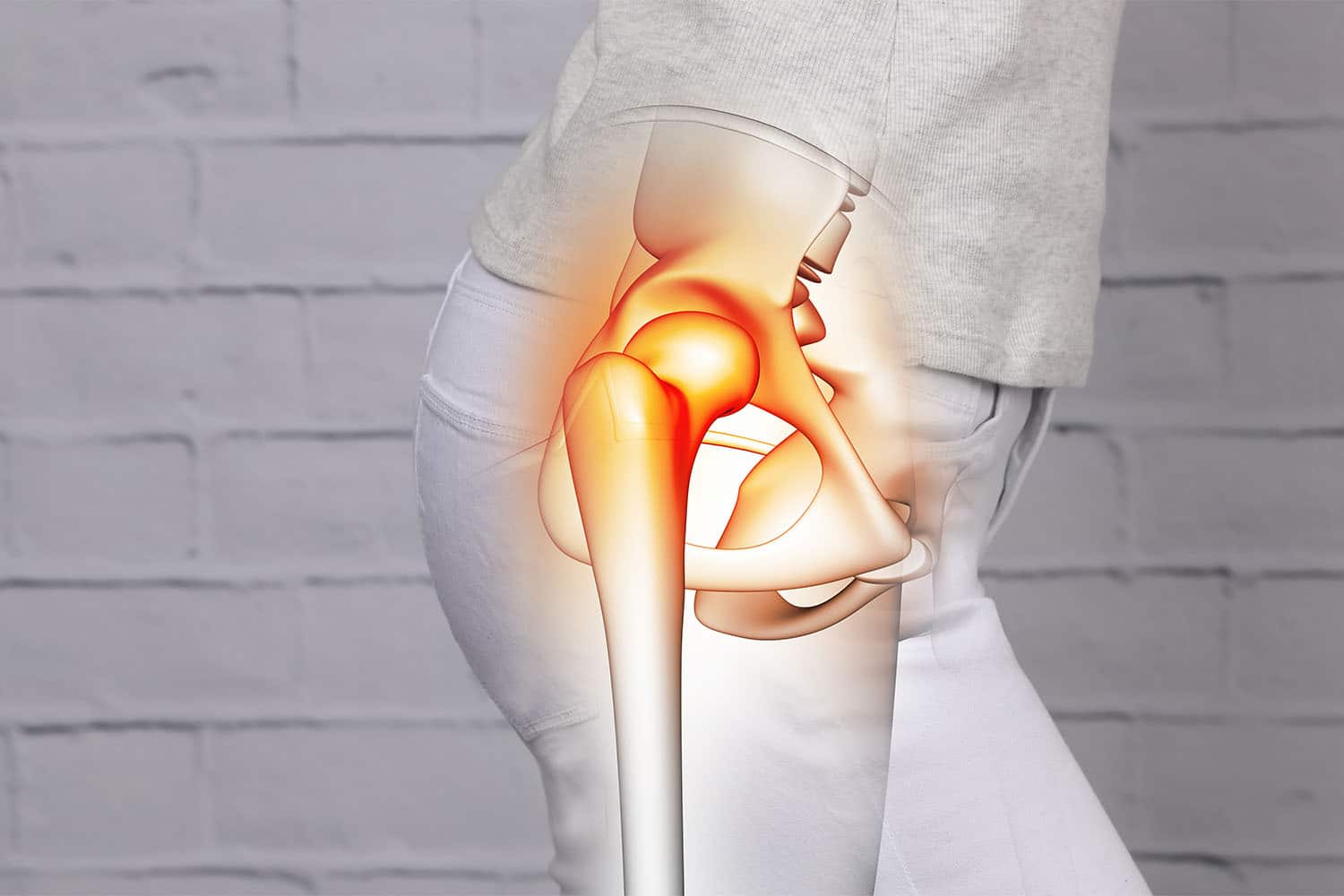Hip Pain Relief: Here's How To Relieve Your Hip Pain
|
| To fully understand the significance of hip pain, we must first examine the anatomy of the hip joint. The hip joint is a ball-and-socket joint that connects the thigh bone (femur) to the pelvis (acetabulum), serving as the cornerstone of our movement and physical abilities. When something goes wrong in the hip joint, the consequences can be severe and far-reaching. |
In this in-depth exploration of hip pain, we will delve into the various causes of this debilitating condition, including injury, overuse, and degenerative diseases such as osteoarthritis and bursitis.
We will also explore the various treatment options available, from physical therapy and pain management techniques to surgical interventions. Join us as we shed light on the unseen struggles of hip pain and embark on a journey toward relief and restoration.
What Are Some Common Causes of Hip Pain?

If we want to understand how to treat hip pain, it’s important to first recognize where it comes from.
Osteoarthritis
Osteoarthritis, known as "wear and tear" arthritis, is a common cause of hip pain. It occurs when the protective cartilage on the surface of the bones in the hip joint begins to deteriorate, leading to friction, pain, and inflammation.
Bursitis
Bursitis is the medical term used to describe inflammation of the bursae, the tiny fluid-filled sacs that cushion the hip joint. Triggered by various factors such as overuse, injury, or even arthritis, bursitis can result in persistent and painful sensations marked by swelling and limited mobility.
Rheumatoid Arthritis
Rheumatoid arthritis is a chronic autoimmune disease characterized by persistent inflammation of joints such as the hips, wrists, and knees.
With rheumatoid arthritis, the body produces antibodies that attack and inflame the synovial membrane, the protective lining surrounding the joints. This can activate pro-inflammatory cytokines and other inflammatory signals, resulting in joint pain, knee pain, hip problems, and swelling.
Hip Injury
Trauma to the hip joint, whether brought on by a fall, accident, or sports injury, can result in devastating consequences such as hip dislocations, fractures, and labral tears. These injuries can lead to chronic pain, swelling, and limited mobility, making it difficult for someone to carry out even the most mundane daily activities.
Overuse
Overuse injuries, such as tendinitis, occur when a person engages in an activity or exercise that puts too much strain on the hip joint, leading to inflammation and pain. Athletes and manual laborers, in particular, are susceptible to these conditions, as they are more likely to engage in repetitive, high-intensity activities.
Hip Fractures
Hip fractures can be a direct result of osteoporotic bone weakness, a condition that weakens the bones and makes them more susceptible to fractures. Falls and other traumatic injuries can also result in hip fractures, which can cause significant pain, swelling, and limited mobility in the affected individual.
How Is Hip Pain Diagnosed?

Diagnosing the root cause of hip pain requires a thorough physical examination conducted by an experienced orthopedic surgeon.
This examination may include testing the range of motion, assessing tenderness and stability, evaluating gait and posture, and performing special tests like The FABER Test (Flexion, Abduction, and External Rotation) to pinpoint muscular or ligamentous injuries. They may also use imaging methods such as X-ray, CT scan, or MRI to rule out structural issues.
These imaging studies can provide a detailed view of the bones, soft tissues, and joint spaces, allowing medical professionals to identify any structural abnormalities or injuries that may be contributing to the discomfort.
In some cases, doctors may also order laboratory tests to rule out underlying medical conditions that could be causing hip pain. These tests may include blood work to check for inflammatory markers, as well as tests to assess joint function and integrity.
By piecing together the results of the physical examination, imaging studies, and laboratory tests, medical professionals can develop a comprehensive understanding of the patient’s hip pain, leading to a targeted and effective treatment plan.
How Is Hip Pain Treated?
When it comes to treating hip pain, different approaches will fit different circumstances — your doctor can work with you to craft a personalized treatment plan based on your needs and specific symptoms. However, these are some common treatment methods for hip pain.
Medication
When it comes to relieving hip pain, many individuals turn to over-the-counter pain medications, such as acetaminophen, or non-steroidal anti-inflammatory drugs (NSAIDs), such as ibuprofen. However, in cases of severe hip pain, these medications may not be effective.
In such cases, prescription pain relievers such as opioids or COX-2 inhibitors may be prescribed.
Physical Therapy
When it comes to managing hip pain, physical therapists can be a valuable resource. From gentle range of motion exercises to targeted strengthening drills and restorative soft tissue massages, physical therapy can offer a comprehensive approach to treating hip pain and ensuring long-lasting results.
However, physical therapy is not without its challenges. To reap the rewards of physical therapy, you'll need to bring your determination and be prepared to invest time and effort into your rehabilitation.
Injection Therapy
Sometimes, conservative treatments just don't cut it. For those stubborn cases of hip pain that seem to resist the effects of physical therapy and pain medications, injection therapies may provide some much-needed relief.
From corticosteroids to platelet-rich plasma, injection therapy offers a range of options, each with its own set of benefits and risks.
Corticosteroids act on the body's inflammatory response and help to reduce pain by numbing the affected area. On the other hand, platelet-rich plasma (PRP) injections are made of healing plasma taken from the patient's own blood and injected into the affected joint.
These injections are thought to stimulate the repair of damaged tissue, helping to relieve pain and improve mobility.
Surgery
So, what happens when conservative treatments just don't cut it? It might be time to consider surgical intervention.
Depending on the injury, healthcare professionals may recommend the following surgeries:
-
Hip replacement surgery: Also known as total hip arthroplasty, hip replacement surgery involves swapping out a damaged or diseased hip joint with a prosthetic one. This procedure is a lifesaver for individuals suffering from hip osteoarthritis.
-
Labral repair surgery: This surgery aims to fix tears in the labrum, a ring of fibrocartilage surrounding the hip joint, and restore its stability. Labral repair is typically recommended only for those experiencing chronic hip pain and instability.
-
Microfracture surgery: This procedure involves creating tiny fractures in the bone near the damaged cartilage to spur the growth of new cartilage and improve joint function. This procedure is an option for individuals with small areas of cartilage damage or early-stage osteoarthritis.
Surgical intervention for hip pain, regardless of the technique selected, is a significant procedure that requires collaboration between the patient, surgeon, and medical team.
Can Lifestyle Changes Help With Hip Pain?
Being overweight can place strain on the hip joint and can lead to chronic pain. While it’s important to get the opinion of a licensed provider, maintaining a healthy weight by eating well and exercising may help to reduce stress on the hips.
Additionally, low-impact exercises like walking or swimming can help manage pain. These gentle forms of exercise help to keep the body limber, reducing the stress on joints and keeping the pain at bay. So, get to it and get moving — your hips will thank you.
Most importantly, good posture is the foundation of pain management. By keeping the body aligned and balanced, you can reduce the stress on your joints and prevent pain from taking hold.
What Complementary Therapies Can Help With Hip Pain?

For many, traditional treatments alone are not enough to bring relief. This is when many turn to complementary therapies to help manage pain levels without the use of medication or surgery.
For instance, acupuncture is a powerful tool in the fight against pain. This ancient technique involves using the delicate insertion of fine needles to support the body's natural healing processes.
Massage therapy is another simple yet effective way to manage pain. By applying pressure to the affected area, massage therapy can help to alleviate tension and reduce irritation. Whether you opt for a relaxing Swedish massage or a deep-tissue massage, this age-old treatment is a powerful ally in the fight against pain.
Finally, chiropractic care is all about realigning the body, reducing stress on the joints, and promoting pain-free movement. By using gentle adjustments to restore proper alignment, chiropractic care helps to alleviate discomfort and improve overall health.
Optimize Your Well-Being for Hip Health
Whether you opt for traditional treatments, complementary therapies, or a combination of both, it's important to remember that hip pain is an individual experience. With the right knowledge and treatments, you can take control of your health and optimize your well-being.
At Muscle MX, we believe that taking control of your well-being starts with having the necessary knowledge and resources. We’re committed to providing you with the information you need to take the first step toward a healthier lifestyle.
If you're ready to take control of your well-being and start feeling your best, join us at Muscle MX.
Sources:
FABER Test | Physiopedia
Treatment of osteoarthritis of the knee with microfracture and rehabilitation | PubMed
Bursitis | Johns Hopkins Medicine













































